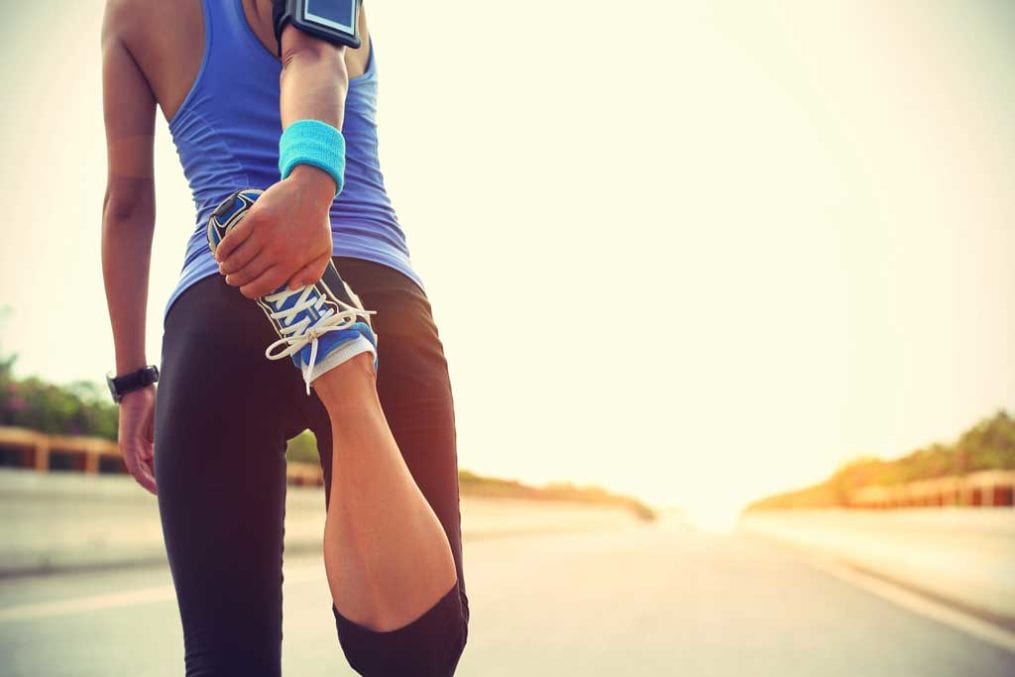Common running injuries and how to avoid them

It’s no surprise that running has peaked in popularity this year. With gyms closed, exercise options limited and our cooped-up lives leaving us craving the outdoors, a jog round the local park is one of a small number of luxuries we’ve been able to enjoy. But with increased exercise comes greater risk of injury, and unfortunately the data agrees: Google searches for common running injuries have surged since lockdown. Stay pain-free with these tips from Emily Partridge, MSK Clinical Lead at Bupa Health Clinics.
Shin splints
This is one of the most common running injuries, especially for beginners who aren’t used to running, or for those recovering from an injury. The term refers to lower leg pain below the knee and is often a result of muscle overuse, wearing worn-out shoes or running on hard surfaces.
Avoid it: To help prevent shin splints, make sure you build up your mileage and fitness slowly, and combine running with other exercises. Yoga is a great exercise to combine with running as it stretches and strengthens your muscles. If you already have shin splints, stretch or foam roll your shins regularly to aid recovery.
Runner’s knee
This is a catch-all terms to describe several injuries that cause pain around the kneecap.
Avoid it: Helping to prevent runner’s knee is similar to shin splints; make sure you build up your mileage slowly, and that you’re running in the right shoes. Warming up and cooling down properly is essential, and this should include stretching the muscles around the ankle, knee and hip.
Achilles tendinitis
The Achilles tendon is a band of tissue that connects the calf muscles at the back of the lower leg to your heel bone. Achilles tendinitis is a result of the overuse of this muscle. It typically happens when runners quickly increase the intensity or duration of their runs.
Avoid it: To help reduce the risk of Achilles tendinitis you should increase the intensity and amount you are running gradually. Make sure you are stretching your calf muscles before and after exercising.
Plantar fasciitis
Plantar fasciitis is pain on the bottom of the foot around the heel. This is often a stabbing pain that is particularly painful when you take your first steps in the morning. The pain can return after sitting or standing for long periods of time.
Avoid it: Choose shoes that offer good support, not only for running, but in your day-to-day life as well. Swap running for low-impact exercises such as cycling or swimming until the injury has healed and make sure you are stretching your leg and foot muscles properly.
What to do if you do get injured
If you’ve injured yourself after a run, there are some things you can do to help reduce swelling and pain, and aid recovery. There are also things you should avoid doing. A great way to remember these is by using the POLICE and HARM methods:
POLICE
Protect: Protect your injury from further damage. You’ll need to avoid aggravating the injury initially but it’s important to keep moving within comfort levels. Depending on the injury, some form of support or a splint may be helpful.
Optimal loading: Get active sooner rather than later. Start to put weight on your injury and build up your range of movement. Do this gradually and be guided by what feels manageable.
Ice: Place a cold compress, such as a bag of ice or frozen peas, wrapped in a towel onto the painful area. Do this for around 20 minutes every couple of hours for the first two to three days.
Compression: Compress the injured area using a bandage to help reduce swelling.
Elevation: Elevate your injury above the level of your heart, if able.
HARM
For the first few days after an injury, prevent further damage by avoiding HARM.
Heat: Don’t have hot baths, showers or saunas and avoid using heat rubs or packs immediately after an injury.
Alcohol: Avoid alcohol as it can slow down your recovery and increase your chances of hurting yourself again.
Running: Don’t run or do other types of moderate activity as this may cause further damage.
Massage: Massaging the injured area can cause more swelling and bruising, so avoid this for the first day or two.
Remember…
- If your injury is serious, you should seek immediate medical attention. Soreness with any new exercise routine is normal, but persistent pain should not be ignored.
- Listen to your body and don’t run through pain: if you don’t feel completely comfortable running or think there’s a reason why you shouldn’t, then don’t. Hold off until you feel fully ready, or seek the advice of a physiotherapist.
- Doing too much too soon will be difficult to maintain as a new runner, so increase your miles gradually. Running two to three times a week should improve your fitness, but give yourself at least a day between runs to allow your body to adapt.






